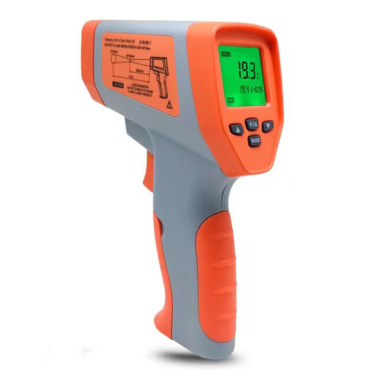
# How to Use a Cooking Thermometer for Perfectly Cooked Meals
## Why a Cooking Thermometer is Essential
A cooking thermometer is one of the most important tools in any kitchen. Whether you’re grilling, roasting, or baking, using a thermometer ensures your food reaches the perfect internal temperature for both safety and taste. No more guessing if your chicken is done or your steak is medium-rare – a thermometer gives you precise measurements every time.
## Types of Cooking Thermometers
Before you start using a cooking thermometer, it’s important to know which type is right for your needs:
### Instant-Read Thermometers
These provide quick temperature readings (usually within 2-5 seconds) and are perfect for checking doneness at the end of cooking. They’re not designed to stay in food while it cooks.
### Oven-Safe Thermometers
These remain in the food throughout the cooking process and can be read through the oven window. They’re great for large cuts of meat that cook for long periods.
### Probe Thermometers
These feature a probe that stays in the food while it cooks, connected to a digital display outside the oven. Many models have alarms that sound when food reaches the desired temperature.
## How to Use a Cooking Thermometer Properly
### 1. Choose the Right Spot
Insert the thermometer into the thickest part of the food, avoiding bones, fat, or gristle which can give false readings. For poultry, check the breast and thigh. For roasts and steaks, check the center.
### 2. Wait for the Reading to Stabilize
With instant-read thermometers, wait about 15-30 seconds for the temperature to stop rising. For digital probes, wait until the display stops changing.
### 3. Know Your Target Temperatures
Here are some key temperature guidelines:
- Poultry: 165°F (74°C)
- Ground meats: 160°F (71°C)
- Pork: 145°F (63°C)
- Beef, lamb, veal (steaks/roasts): 145°F (63°C) for medium-rare
- Fish: 145°F (63°C)
### 4. Clean Your Thermometer Properly
Always wash your thermometer with hot, soapy water after each use to prevent cross-contamination. Some models have waterproof probes that can be submerged.
## Tips for Best Results
Calibrate Regularly
Check your thermometer’s accuracy periodically by testing it in boiling water (212°F/100°C at sea level) or ice water (32°F/0°C).
Consider Carryover Cooking
Remember that food continues to cook after being removed from heat. For meats, you might want to remove them 5-10°F below the target temperature.
Use Different Thermometers for Different Tasks
An instant-read is great for quick checks, while a leave-in probe is better for monitoring long cooks like roasts or turkeys.
Keyword: cooking thermometer
## Common Mistakes to Avoid
Don’t let the thermometer touch the pan or baking dish when taking measurements. Avoid inserting it too close to the surface of the food. Never rely on cooking times alone – always verify with temperature. And don’t forget to account for thermometer placement when carving meat to avoid revealing the probe hole.
## Conclusion
Mastering the use of a cooking thermometer will transform your culinary results, ensuring perfectly cooked meals every time while maintaining food safety.